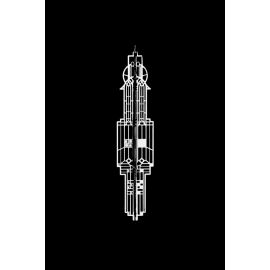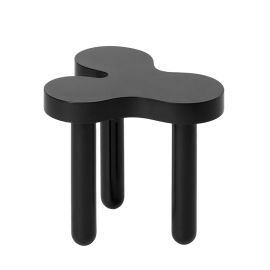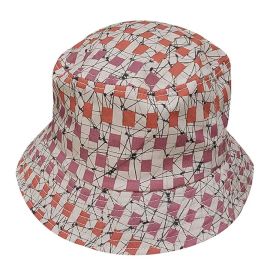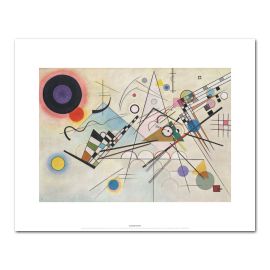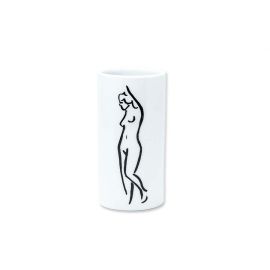Albert Gleizes' On Brooklyn Bridge (Sur Brooklyn Bridge) was completed in 1917. Each archival pigment print is made with hand-cut paper.
We are now offering a user-friendly 16 x 20 in. black wood frame by Nielsen Bainbridge, pictured above, as an add-on purchase. Frame packaged separately.
- Ready to frame
- Paper measures 16 x 20 in.
- Image measures 8 x 12 in.
About the Artist:
Albert L?on Gleizes was born in Paris on December 8, 1881. He worked in his father's fabric design studio after completing secondary school. While serving in the army from 1901 to 1905, Gleizes began to paint seriously. He exhibited for the first time at the Soci?t? Nationale des Beaux-Arts, Paris, in 1902, and participated in the Salon d'Automne in 1903 and 1904.
With several friends, including the writer Ren? Arcos, Gleizes founded the Abbaye de Cr?teil outside Paris in 1906. This utopian community of artists and writers scorned bourgeois society and sought to create a nonallegorical, epic art based on modern themes. The Abbaye closed in 1908 due to financial difficulties. In 1909 and 1910 Gleizes met Robert Delaunay, Henri Le Fauconnier, Fernand L?ger, and Jean Metzinger. In 1910 he exhibited at the Salon des Ind?pendants, Paris, and the Jack of Diamonds in Moscow. The following year he wrote the first of many articles. In collaboration with Metzinger, Gleizes wrote Du cubisme, published in 1912. The same year Gleizes helped found the Section d'Or.
In 1914 Gleizes again saw military service. His paintings had become abstract by 1915. Travels to New York, Barcelona, and Bermuda during the next four years influenced his stylistic evolution. His first solo show was held at the Galeries Dalmau, Barcelona, in 1916. Beginning in 1918 Gleizes became deeply involved in a search for spiritual values, as reflected in his painting and writing. In 1927 he founded Moly-Sabata, another utopian community of artists and craftsmen, in Sablons. His book, La Forme et l'histoire, published in 1932, examines Romanesque, Celtic, and Oriental art. In the 1930s Gleizes participated in the Abstraction-Cr?ation group. Later in his career Gleizes executed several large commissions, including the murals for the Paris World's Fair of 1937. In 1947 a major Gleizes retrospective took place in Lyons at the Chapelle du Lyc?e Amp?re. From 1949 to 1950 Gleizes worked on illustrations for Blaise Pascal's Pens?es Sur l'Homme et Dieu. He executed a fresco, Eucharist, for the chapel Les Fontaines at Chantilly in 1952. Gleizes died in Avignon on June 23, 1953.
| Skip FB/IG Feed? | No |
|---|---|
| Description | Albert Gleizes' On Brooklyn Bridge (Sur Brooklyn Bridge) was completed in 1917. Each archival pigment print is made with hand-cut paper. We are now offering a user-friendly 16 x 20 in. black wood frame by Nielsen Bainbridge, pictured above, as an add-on purchase. Frame packaged separately.
About the Artist: Albert L?on Gleizes was born in Paris on December 8, 1881. He worked in his father's fabric design studio after completing secondary school. While serving in the army from 1901 to 1905, Gleizes began to paint seriously. He exhibited for the first time at the Soci?t? Nationale des Beaux-Arts, Paris, in 1902, and participated in the Salon d'Automne in 1903 and 1904. With several friends, including the writer Ren? Arcos, Gleizes founded the Abbaye de Cr?teil outside Paris in 1906. This utopian community of artists and writers scorned bourgeois society and sought to create a nonallegorical, epic art based on modern themes. The Abbaye closed in 1908 due to financial difficulties. In 1909 and 1910 Gleizes met Robert Delaunay, Henri Le Fauconnier, Fernand L?ger, and Jean Metzinger. In 1910 he exhibited at the Salon des Ind?pendants, Paris, and the Jack of Diamonds in Moscow. The following year he wrote the first of many articles. In collaboration with Metzinger, Gleizes wrote Du cubisme, published in 1912. The same year Gleizes helped found the Section d'Or. In 1914 Gleizes again saw military service. His paintings had become abstract by 1915. Travels to New York, Barcelona, and Bermuda during the next four years influenced his stylistic evolution. His first solo show was held at the Galeries Dalmau, Barcelona, in 1916. Beginning in 1918 Gleizes became deeply involved in a search for spiritual values, as reflected in his painting and writing. In 1927 he founded Moly-Sabata, another utopian community of artists and craftsmen, in Sablons. His book, La Forme et l'histoire, published in 1932, examines Romanesque, Celtic, and Oriental art. In the 1930s Gleizes participated in the Abstraction-Cr?ation group. Later in his career Gleizes executed several large commissions, including the murals for the Paris World's Fair of 1937. In 1947 a major Gleizes retrospective took place in Lyons at the Chapelle du Lyc?e Amp?re. From 1949 to 1950 Gleizes worked on illustrations for Blaise Pascal's Pens?es Sur l'Homme et Dieu. He executed a fresco, Eucharist, for the chapel Les Fontaines at Chantilly in 1952. Gleizes died in Avignon on June 23, 1953. |
| Artist | Albert Gleizes |


